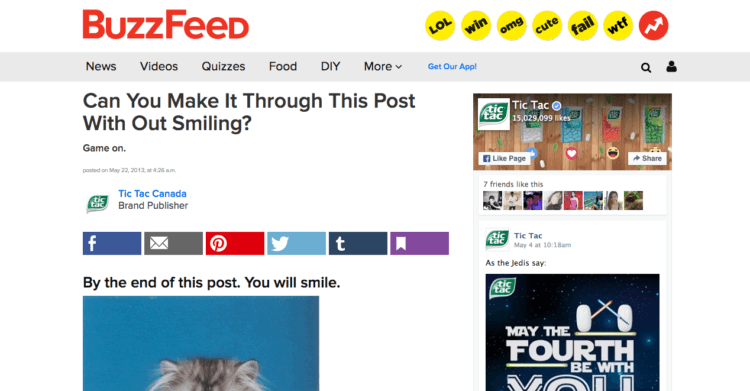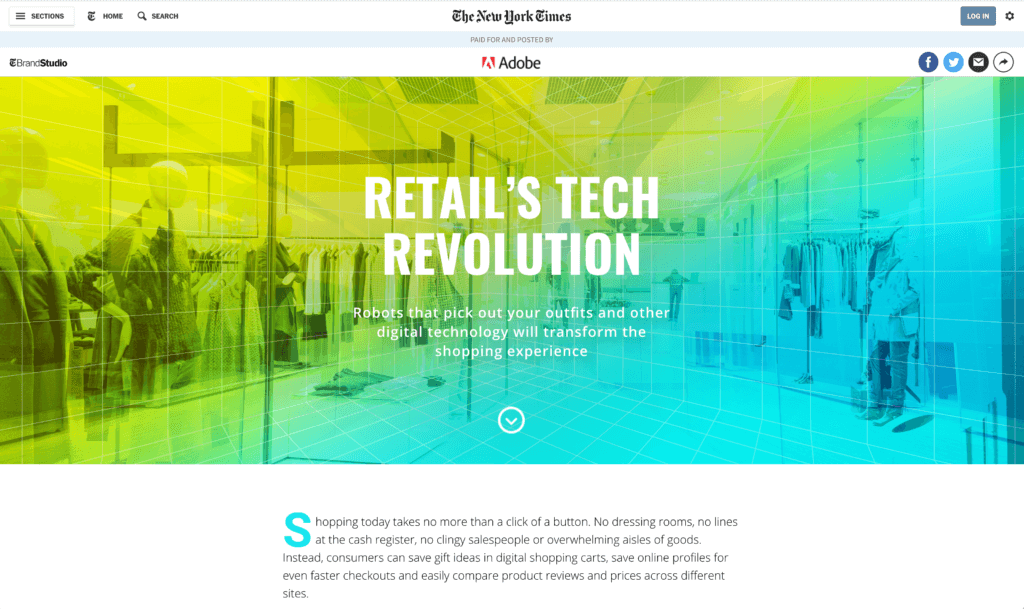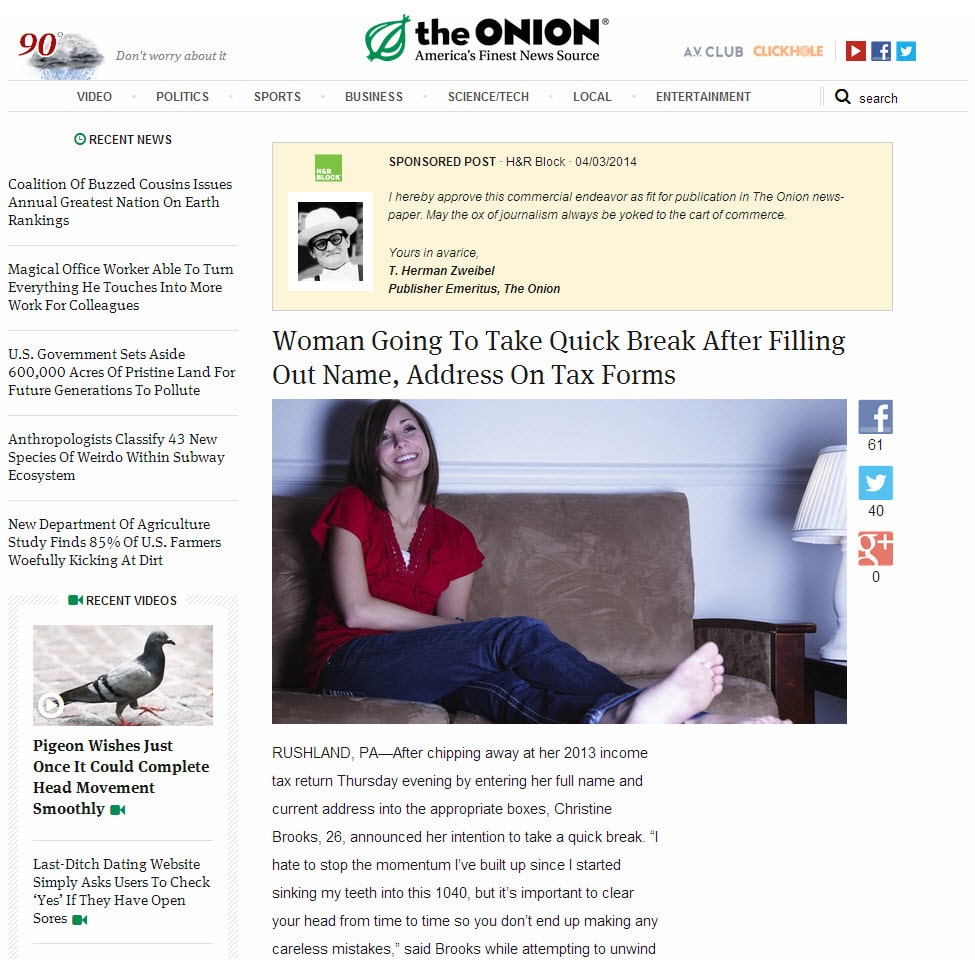With as many as 100 million new businesses being launched each year, standing out from the crowd and reaching the right audience is becoming increasingly challenging. This is forcing smart startup marketing to take a three-pronged strategy, encompassing earned, owned, and paid media campaigns running concurrently.
Earned media generally stems from traditional public relations (PR) efforts. Earned media includes product reviews or interviews by journalists or ‘organic’ mentions of a brand in the mainstream press. Owned media refers to publishing content on a company’s own online presence. Owned media includes content on companies’ webpages, blogs, and social media channels.
Last but not least, marketers use paid media, which includes different types of advertising such as pay per click and re-targeting ads, social media ads, paid influencers, and also sponsored content. With recent studies highlighting that 70% of internet users would rather learn about products through high-quality content, rather than ads, modern startup marketers are increasingly putting more of their budgets behind the latter.
And there is no shortage of places to publish native advertising. From The New York Times to Forbes’ Brand Voice, most of the world’s leading publications now accept sponsored content, and 90% of publishers state they are or are planning to roll out native advertising options in the future. Demand has created an opportunity for new Martech players like Pressboard, Polar, and Newslauncher who are offering ‘pay to play’ simplicity for brands who want to put their money where their mouths are.
Why Startups Are Investing in Sponsored Content
But convenience comes at a cost for startup marketing. Sponsored articles on the likes of Forbes, Inc, Fast Company, The Wall Street Journal or The Verge can cost between $20,000 – $50,000. So considering the hefty price tag, why are so many brands continuing to splash out on sponsored content?
1. The Right Messages
Far too often, when people think sponsored content they think low quality, highly promotional fluff. They think of the Mad Men era, in your face, native advertising like “Ten Cocktails To Compliment Your Camel Cigarettes.” However, the reality is that to create effective sponsored posts, the content needs to offer real value to the reader, which will keep them engaged until they reach the call to action.
Since sponsored content blends with the publication’s editorial, some argue it’s inherently misleading. In an attempt to offer more transparency to readers the general rule is that all paid posts should be clearly marked as sponsored — either beside the author byline, in the title or with a disclaimer — but the actual text itself should still mimic the journalistic style, flow and quality of the publication it is being posted in.
Marketers have a lot more freedom in the creative angles they take even if native publication dictates the style. Sponsored posts offer companies a unique chance to reveal a more human side to their brands. Additionally, these curated pieces to show others what brands consider to be special about themselves.
The idea is to make a brand sound attractive, without selling too hard. To show readers the benefits of becoming part of a brand’s community, without actually screaming “BUY OUR STUFF.”
Sponsored Content Should Tell a Story
Sponsored content forces a brand to create interesting stories in order to blend with the native publication. Companies must create content around things other than its products. Sponsored posts focus on themes ranging from a company’s team, social responsibility efforts, big mission, or values. The idea is to spark the reader’s imagination and elicit emotions which will create a good impression. In turn, this will hopefully create brand affinity.
And if a brand does want to plug a particular product, it has to do so in a roundabout way. Whether it be reporting on key trends within the brands industry, focusing on problems which their target consumer faces in their day to day lives, or simply sparking the imagination of readers as to different ways new technology could make their lives better, there is a lot more room for a brand to tell the right aspects of its story when they are the ones holding the pen.
Vitaly Pecherskiy, COO of StackAdapt argues:
“The ability to advertise by communicating good ideas has to be a positive shift for society. In an economy accustomed to aggressive advertising and companies that will do anything to make a sale, native advertising is a breath of fresh air.”
2. For the Right Audiences
Getting ‘organic’ or earned results in leading publications is becoming trickier. The media is in a downturn since the internet blew its monetization model out the window. This has led to leading to newsroom cuts, closures, and ultimately fewer loudspeakers trying to cover more and more announcements.
Any publicist worth their weight in salt will tell you that you cannot guarantee results through traditional PR. The chance of being covered by a journalist from a leading publication is based entirely on the strength and newsworthiness of a brand’s particular story or announcement, and the skills and contacts of the PR agency or professional who is running the campaign.
And it’s not just earned media which is increasingly more difficult. Thanks to changes to social media platforms, it’s now trickier to guarantee those social ads are reaching the right audiences as well. A recent study by AdWeek highlights that 46% of brands are not convinced they that their social media efforts are meeting aims, especially since new algorithms from Facebook now deprioritize social posts from brands in favor of posts from within users’ personal networks.
This is where the benefits of sponsored posts emerge. Spending tens of thousands of dollars on a single post on The WSJ or another leading publication may seem risky considering how far the same budget could go via social, general paid advertising or classic PR. However, the attraction of sponsored advertising lies in being 100% sure that a brand’s messages will reach millions of readers within a specific audience.
Native Advertising for Baby Boomers Versus Millennials
Different digital startup marketing tactics resonate best with different demographics. Recent reports estimate 41.1% of millennials use ad blockers but this level is considerably lower among Gen X internet users, at 26.9%, and even lower for baby boomers, of whom only 13.9% block ads.
But, with challenges come opportunities for startup marketing. While traditional retargeting and pay per click advertising may not be as effective for Millennials, AdWeek published a study which highlighted that 57% of millennials interviewed stated that they are willing to view sponsored content from a brand as long as it includes authentic personalities and is entertaining and useful. A new survey by Collective Bias found that one-third of millennials have purchased from a brand after seeing a sponsored post.
Marketing can highlight the likes, interests, and backgrounds of their prospective customers. Then marketers can craft content that fits with their unique personalities in startup marketing.
Native advertising expert Maggie Clapperton explains, “Native advertising allows for every kind of targeting imaginable. It includes contextual, demographic, psychographic, location-based, device-based, or intent-based.” In short, sponsoring content removes any guesswork for marketers. Marketers hyper-personalized content to make it resonate with the readers of the media outlet where they are publishing.
3. At the Right Time
Sponsored content is most effective when running concurrently with other startup marketing efforts. Effective PR and marketing require a consistent cycle of different campaigns. Campaigns are based on company events such as new product launches, hires, funding rounds etc. They also cover non-time dependent campaigns such as content marketing, guest articles submissions etc.
When focusing on time-specific announcements, such as the launch of a new product, brands tend to focus a lot of their energy on pitching press releases to media outlets. Then companies will drive extra traffic back to their website with a range of different digital ads. Earned media is the most effective in terms of visibility, SEO and driving leads. However, traditional PR is a waiting game and requires patience.
Even if a leading publication picks up an announcement, or agrees to publish, the brand has little control over exactly when this will happen due to omnipresent editorial backlogs. Pressuring an overworked editor to publish will only damage relationships and could, in fact, lead to the announcement being dropped.
Control Your Content
This is where the benefits of sponsored content shine through again. The brands paying have a lot more control of what content reaches which audiences, on which channels, and when.
And while most sponsored posts are not overtly promotional, most contain a call to action within the text. Sponsored content could link back to a sales landing page, a special offer. It could even link to a contact form to gather potential leads. The main challenge is to create engaging enough content to motivate readers to actually give the link a click.
When planned efficiently, sponsored content campaigns can fit perfectly into more cohesive multi-channel startup marketing campaigns. The ability to choose the exact day and the time content released is invaluable. Native advertising can help drive awareness to a specific audience in the aftermath of a traditional PR campaign. It can also simply keep startup marketing momentum in a period when a brand has few announcements.
Final Thoughts on Sponsored Content for Startup Marketing
With a high barrier to entry, more options will eventually emerge for cash-strapped startups to enter the arena. And with even the world’s largest media companies still struggling to monetize, and consumers turning their backs on more direct, traditional advertising techniques, we’re likely to see sponsored posts and native advertising continue to rise in popularity with brand marketers around the globe.
Craig Corbett is principal at media incubator ESPACIO and PR startup Publicize. Alongside his keen interest in startups, Craig is passionate about supporting the media industry, is chairman for CEE tech publication 150sec.com, and a regular contributor for leading publications such as VentureBeat, TNW, Entrepreneur magazine.










